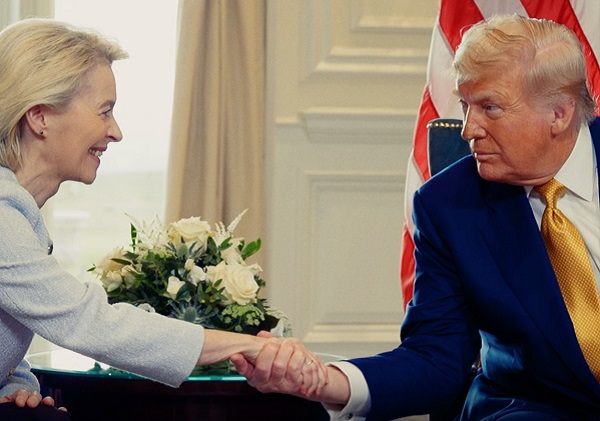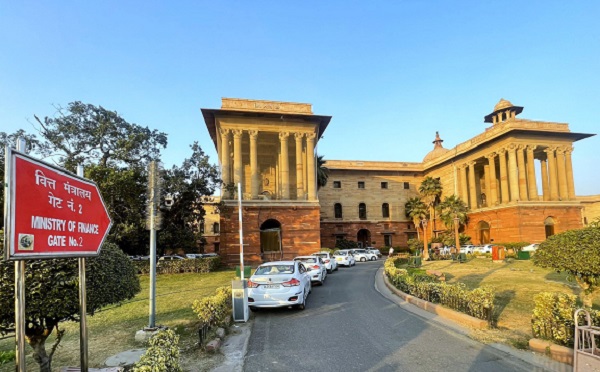.png)
US, EU Framework Agreement on Trade and Lessons for India
New Delhi should push for similar carve-outs and flexibilities in CBAM and sustainability rules, especially to shield Indian SMEs and exporters from disproportionate costs.


Ajay Srivastava, founder of Global Trade Research Initiative, is an ex-Indian Trade Service officer with expertise in WTO and FTA negotiations.
August 22, 2025 at 4:55 AM IST
US President Donald Trump announced a trade deal with the European Union on July 27, 2025. Less than a month later, on August 21, both sides agreed to a detailed Framework Agreement, setting the stage for negotiations toward a full-fledged treaty
Under the Framework Agreement, the EU will eliminate tariffs on all US industrial goods and many farm and seafood products such as nuts, dairy, fruits, vegetables, processed foods, soybean oil, and pork.
In return, US tariffs on EU goods will be set at either the normal Most Favored Nation rate or 15%, whichever is higher. From September 1, 2025, the US will apply only MFN tariffs on certain EU exports including cork, aircraft and parts, and generic medicines. Once the EU introduces legislation on tariff cuts, Washington will reduce its auto tariffs to 15%.
The agreement also secures major commercial commitments. The EU will buy $750 billion worth of US liquefied natural gas, oil, and nuclear energy products through 2028, along with at least $40 billion in US AI chips for European computing centers.
European companies have pledged $600 billion of new investments in US strategic sectors over the same period, and the bloc will increase its procurement of U.S. defense and military equipment, reinforcing Washington’s role as a key security supplier.
The framework deal also allows concessions to US on European regulatory frameworks like the Carbon Border Adjustment Mechanism and Corporate Sustainability Rules.
The EU agreed to provide flexibilities for US small and medium enterprises under CBAM, which will start collecting taxes from January 1, 2026. Similarly, Brussels committed to easing compliance under the Corporate Sustainability Due Diligence and Reporting Directives, with requirements taking effect from July 2027, and even considering exemptions for US firms already subject to high-standard rules at home. These moves highlight the EU’s willingness to accommodate US concerns when market access and strategic partnership are at stake.
For India, which is in the advanced stages of negotiating its own free trade agreement with the EU, these developments carry clear lessons. New Delhi should push for similar carve-outs and flexibilities in CBAM and sustainability rules, especially to shield Indian SMEs and exporters from disproportionate costs. Without this, Indian exporters may find themselves facing steep compliance costs even as US competitors enjoy preferential treatment.



